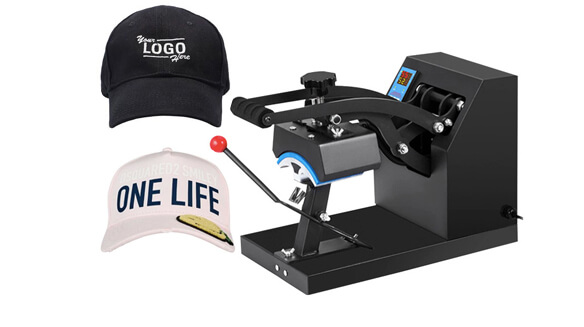What are seven mistakes to avoid when embroidering on a cap
Although adding embroidery to a cap can be enjoyable and satisfying, you should be mindful of frequent errors that could obstruct your progress. So, what are seven mistakes to avoid when embroidering on a cap? You will find them in this post.
By steering clear of these pitfalls, you can ensure that your cap embroidery projects turn out beautifully and showcase your skills and creativity.
What Are Seven Mistakes To Avoid When Embroidering On A Cap?

Seven Blunders To Note When Embroidering On A Cap
Embroidering on a cap can be a rewarding and creative endeavor. However, to achieve excellent results, you need to be aware of common mistakes and take proactive steps to avoid them. Let’s review the common errors, from incorrect hooping to not changing the needles, so that you can avoid them.
Operate The Machine Too Fast
While it might be tempting to speed up the process to increase efficiency, doing so can lead to various problems. Embroidering on a cap requires precision and attention to detail, as the curved surface presents challenges for the machine.
Operating at high speeds can cause the cap fabric to stretch or distort, resulting in misaligned stitches and compromised design quality.
Additionally, increased machine speed may trigger thread tension issues, thread breaks, or skipped stitches, leading to incomplete or messy embroidery.
Incorrect Hooping
Hooping refers to securing the cap fabric in the embroidery hoop for stitching. Failing to hoop the cap properly can entail numerous issues during the embroidery process.
Improper hooping can loosen the cap fabric or make it unevenly stretched, resulting in misaligned or distorted designs.
The embroidery may appear skewed or have gaps between stitches, detracting from the overall quality. It is essential to ensure the cap is firmly and evenly hooped, with the fabric taut but not overly stretched.

Remember to secure the cap fabric in the hoop properly
Overlook The Bobbin
The bobbin plays a critical role in the embroidery process, providing the thread for the underside of the design. Neglecting to check the bobbin can lead to several complications.
If the bobbin runs out of line during embroidery, the machine will continue stitching with only the upper thread, resulting in incomplete or uneven designs.
Also, an incorrectly wound or poorly inserted bobbin is the recipe for thread tension issues, and visible loops, thread breaks, or erratic stitches are inevitable.
Regularly monitoring the bobbin’s status throughout the stitching process helps maintain a consistent thread supply and prevents potential disruptions or flaws in the embroidered design on the cap.
Not Change The Needles
Over time, needles can become dull or damaged, followed by various problems. When embroidering on a cap, using worn-out needles can result in skipped stitches, thread breaks, or uneven stitching. What Needle Size Should Be Used To Embroider Hats?
Worn needles may bring damage to the cap fabric, leaving behind visible holes or snags. Changing the needles ensures optimal performance, reduces the risk of embroidery defects, and helps maintain the integrity of both the needlework and the cap material.
Ignore Thread Tension
Thread tension is another factor that plays a significant role in achieving consistent and high-quality embroidery results.
Improper thread tension can be linked to several issues during cap embroidery. If the tension is too loose, the stitches may appear sloppy or uneven, and the design might lack definition.
On the other hand, overly tight thread tension can force the cap fabric to pucker or distort, ending up with an unsightly and unprofessional finish. Thus, finding the right balance by adjusting the thread tension according to the cap fabric and design requirements is a must.
Improper Placement
The correct placement of the design determines whether you achieve a professional and visually appealing embroidery pattern.
Failing to position the design accurately is the source of misaligned or distorted stitching, leading to an unbalanced and visually unpleasing outcome. Ensuring you follow the Hat Embroidery Dimensions is crucial. Therefore, take the time to carefully measure and mark the desired placement on the cap before hooping.
Consider the cap’s shape, curvature, and any design elements like seams or brims that may affect the embroidery. Ensuring the design is centered, level, and aligned with the cap’s front or the desired area will help create a visually pleasing embroidery that enhances the cap’s overall appearance.
Forget About Digitizing
Digitizing is the process of converting a design into a digital format that can be read and stitched by an embroidery machine. Neglecting proper digitization can entail numerous problems during cap embroidery.
Without appropriate digitizing, the design may lack clarity, have varying stitch types, or fail to accommodate the cap’s unique shape and curvature. Misaligned stitches, distorted designs, or even difficulties in fitting the design within the limited embroidery area on the cap are to be expected.

It’s best to make a digital design first
For more insights on the broader challenges of using machines for embroidery, read about the Disadvantages Of Machine Embroidery.
Frequently Asked Questions
What Is The Right And Wrong Side Of Embroidery?
The right side refers to the side that will be more visible when the embroidery is complete, while the wrong side is the back or less visible side. The right side typically displays smooth, neat stitches, while the wrong side may show thread ends or knots.
How Can Embroidery Defects Be Reduced?
Embroidery defects can be reduced by following several key steps. These include:
- Ensuring proper digitization of the design
- Using correct hooping techniques, adjusting thread tension appropriately
- Selecting the right needle for the fabric
- Maintaining the embroidery machine regularly
- Conducting test stitches, using quality thread and stabilizers
- Ensuring skilled operator monitoring
How Do You Know If Embroidery Is Good?
Determining if embroidery is good involves several factors. Firstly, examine the overall appearance of the embroidery, looking for clean, well-defined stitches and consistent thread tension. Then, check for appropriate thread coverage and the absence of loose threads or snags.
How Do You Improve The Quality Of Embroidery?
To improve the quality of embroidery, use high-quality materials that are suitable for the fabric. Adjusting thread tension, selecting the right needle, and maintaining the embroidery machine contribute to better stitch quality.
Also, regular testing, monitoring, and skilled operator training help catch and address any issues early on.
The Bottom Line
What are seven mistakes to avoid when embroidering on a cap? Take note of all blunders above. By avoiding them, you can elevate your cap embroidery skills and achieve outstanding results. Embrace these tips and yield cap embroidery projects with finesse and precision!

















